#this is so long is embarrassing
Text
Over Casca’s naked body
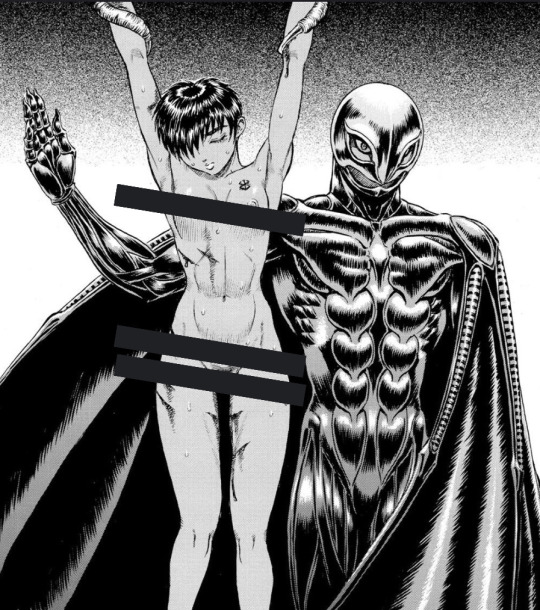
Part one: A long premise
We can’t escape from our geopolitical context even when we are reading manga. We have internalized a good amount of beliefs, values, practices, even regulations from our lived experiences and various simulacra we have been exposed to, especially those in an audiovisual form.
If you grew up in the US, you know that freedom of speech is a core value there. But, while you can say mostly whatever you want within your own country, the US constitution has given the government the right to regulate what comes in from abroad. [1]
And that power has been used. Idealistically, greater access to common technologies even before the internet should have seen a redistribution of the media-creating capacity to many foreign countries outside of the US, so that people could tell their stories. But that hasn’t always been the case, with some exceptions, especially if we consider the biggest narratives that reached global popularity.
During the Cold War, anything that might be considered “communist propaganda” could be seized by the Post Office and never delivered. Books or even souvenirs from communist countries, for instance. Pamphlets criticizing US foreign policy. (…) Obviously it wasn’t totally like North Korea, plenty of foreign movies and music were allowed into the US. But the media that caught on was either already Americanized, or so plastically exotic that it doesn’t really say anything about the culture where it is from. The Beatles were British, but they got their start covering American rock and roll musicians. When John Lennon stepped out of the line, the American government made sure that he knew it. Movies imported from Japan were mostly samurai flicks, with very few movies set in the modern day. The film Ikiru is widely considered the best Japanese film ever made (…) but this existential drama about a depressed lonely man was only given a limited release in California, and the poster was edited to feature a stripper who is only in the movie for one minute. The narrow stream of European movies that made into the USA came in the form of the French New Wave cinema, movies that were stylistically inspired by American films, but also so stuffy that few audiences would ever want to watch them anyway. This was further stifled by the Hays Code, a set of extremely strict regulations that were in place from 1934 to 1968. (…) Some things that were completely banned from ever being shown in any film included: bad guys winning. All movies must end with the police outwitting the evil criminals, or the criminals causing their own demise. Any nudity. (…) Blood or dead bodies. (…) Interracial couples. White people as slaves. Criticism of religion, or of any other country. Naturally this prevented the more artistically liberal European films from being shown in American cinemas and when they did get a release, they were usually edited (…). At least until the rules were abolished in 1968 and replaced by the age rating system we have today. [1]
Even after several decades of access to the internet and foreign cultures, some attitudes have been internalized and carried on. For example, I had direct experience of the ways my own culture has been perceived and stereotyped or interpreted in terms not dissimilar from the exotic. And the same happens to me probably if I don’t keep in check my own personal beliefs about cultures that have been presented to me in similar ways. And I was surprised to see by how deeply rooted and spread are certain attitudes towards punishment or violent retribution viewed as necessary, the policing and self policing, and the expression of judgments or condemnation, and all this can complicate the understanding of different forms of narratives and the acceptance of different cultural attitudes and norms, without the expression of any opinion about morality or legitimacy.
I am reminding you that this is a long premise because I evidently don’t have the gift of brevity but this article is about Berserk and Casca.
In 1956 Anna Magnani won the Academy Award for Best Actress for her first English-speaking role in the American movie The Rose Tattoo. In 1958 Miyoshi Umeki was the first Asian born actress to win an Academy Award for Best Supporting Actress in Sayonara, a movie that despite its title was an American drama starring Marlon Brando. It isn’t hard to see in these decisions from the Academy, or the ones that followed in other categories, the willingness to build relationships between the US and specific foreign countries where the American army had a massive presence and that after WWII were ideal places for American investors, considering significant rebuilding necessary after the loss in the war. The movie industry and everything around it had instrumental roles. When it comes to the Academy Award, it is very interesting to notice that the women were the first ones to be nominated, becoming ambassadors and facilitators of the reshaping of the images of Italy and Japan from enemies to new essential strategic allies in the Cold War. And here comes the problem of the exotic, because after several decades I still see similarities in the American perception of those foreign cultures, Italian and Japanese, to those easy and friendly and intentionally constructed imaginaries of that time. Take the press around Anna Magnani or Miyoshi Umeki for example. Terms are so widely used and repeated that they are still in their Wikipedia pages in English today. For what interests me here, I am going to quote or summarize parts of the video essay listed below as [2] but I really recommend watching it entirely. It really helped me understand some of the issues I am talking about here, but it is much more than just this. And there is footage worth the time.
[I know that many people here on tumblr really dislike YouTube videos. I understand why, when it comes to manga and anime, written articles have still better quality and content, in my opinion, but there are also many video essayists doing their due diligence on several other topics. And when I am busy cooking I put them on].

In the 1950s one of the problem with the new alliance with Japan was the widespread hate and racism towards Japanese people.
The government stepped in, producing educational films meant to endear Japanese culture to Americans (…) They showed off Japanese industry, introduced Americans to sushi and sumo wrestling, explained the country’s new democratic system et cetera. (…) A lot of [musical] acts that were popular with American soldiers, specifically exoticized Asian girls bands, like the Kim sisters and the Tokyo Happycoats, come over to the US and appear on television as both entertainment and a sort of cultural ambassadors, not only demonstrating America’s cultural power and dominance by performing recognizable American tunes, but also signaling to white Americans that those cultures didn’t pose a threat. (…)
It’s worth looking at this film [Sayonara] as part of a larger theme in a very specific post war moment. Gina Marchetti points out in her book Romance and the yellow peril: «Between June 22, 1947, and December 31, 1952, 10517 American citizens, principally Armed Services Personnel, married Japanese women. Over 75% of the total Americans are Caucasian». Meaning, Japanese war brides and the concept of interracial marriages was very much a conversation. (…) Sayonara must be seen as one of many films which called for a new evaluation of Japan as an enemy nation. (…) Much of the way [Miyoshi Umeki] was discussed is probably exactly how you might expect. The language journalists used to describe her was unambiguously racialized and often condescending. In the aftermath of her Oscar win, for example, Louella Parsons called her «a lovely little bit of Japanese porcelain», adding: «What a cute little thing she was in her native costume». Still, her Japanese identity also seemed to serve as a symbol, an embodiment of the new friendly Japan. In Miyoshi, Americans would find an idealized portrait of reconciliation, a woman who bore no resentment over the war, a woman who brought homesick American troops to tears by singing White Christmas, who adored American pizza, who learned English by listening to American records. She was accepted because she actively appreciated and participated in American culture. [2]
The roles offered to Miyoshi Umeki are significant in many ways. After Sayonara, she was cast to play other Asian characters besides Japanese ones. One recurring theme in those movies in particular is the contrast between modernity and tradition.
William G. Hyland writes, Flower Drum Song is a «clash between the Americanized lifestyle of the young Chinese and the traditions of their parents». (…) Miyoshi Umeki plays Mei Lee, a Chinese stowaway who arrives in the US for an arranged marriage. The more Americanized she becomes the more independent, the more willing she is to strike out on her own. [Chang-Hee] Kim writes: «[Flower Drum Song] flamboyantly shows that Asians in America were ready and willing to cast off their heritage and become real Americans in repudiation of the pre-war racial consideration of Asians as permanent aliens». I mention this not only because it’s one of Miyoshi’s major roles, but also because this theme, a supposed enlightenment via westernization, occurs again and again in her filmography, particularly in her work on television. Han [?] writes «Umeki’s representation on television is in constant oscillation between her status as a subservient Asian woman and her transformation into an assertive, modern female professional who has achieved independence through American cultural influence». [2]
Bear with me for a little longer if you can, because we are at the point where, watching the video, I experienced that sensation better translated visually in a lightbulb being turned on. I am skipping here the presentation of the story and footage from Miyoshi’s first appearance on television in The Donna Reed Show, but I once again invite readers to watch the video, which features high quality original footage. I was really struck by the “sensitive way” the American woman - Donna Reed I presumed - approaches the character played by Miyoshi, as the writers back then were well aware of the sensitive racial implications, and nevertheless a certain mentality pushes thought. Watching still, it is easier to avoid the presumption that in the 1960s “they didn’t know better” or that contemporary attitudes have improved greatly, just because we are more careful about the language we use.
The thesis statement of this episode is not subtle. The rejection of traditional Japanese customs allows her to live more fully in a democracy. Of course it isn’t really much of a choice, is it. Maintaining the customs of your culture or risking alienating your entire community. She changes her clothes, puts on a hat and goes shopping because she is an American now. Obviously these stories are told from the white American perspective, where this rejection of tradition and culture is portrayed as unambiguously positive and relatively tension free. This was not the case in Japan where the relationship between modernity and tradition were richly explored in cinema, particularly in women’s films. [2]
I would like to add that the independence that Donna’s character shows is only possible because of a series of factors, including the fact that her husband secures her a higher level of comforts, in comparison with lower classes or non-white Americans, and that domestic work is presumably done by home electrical appliances or other women, especially when you add child care and looking after the elderly to the equation. The unwillingness to consider those types of labor, traditionally carried on by women, as of equal importance to any other jobs is rarely discussed when it comes to the issue of women’s emancipation. Not to mention how, alongside this idyllic world shown on television, in the same country large numbers of women have to deal with continuous push backs in the name of different traditional values that all the same prevent many of them from achieving true equality. Those types of conversation and conflicts between traditional and modern happens at the same time in many countries and in most cases translates to continuous negotiations and compromises carried by men and women in real contexts and real situations, without necessarily white American women being aware of it or of all the necessary nuances.
Let me add this last element of conclusion about Miyoshi Umeki’s story.
In 2018 her son told Entertainment Weekly that in the 1970s she etched out her name on her Oscar and then threw the trophy away. Although he isn’t sure exactly why she did it he said: «She told me, I know who I am and I know what I did. It was a point of hers to teach me a lesson that the material things are not who she was». What Miyoshi Umeki achieved is pretty remarkable but one can’t help but feel that she could probably have done a lot more if she’d been allowed to move beyond her identity. [2]
Part two: Are we reading the same manga?
After considering all this, and more that I can possibly include in here to avoid this being even lengthier, I can’t help but wonder about the generalizations I have seen repeated vastly about portrayals of women in Japanese media, as well as misunderstanding of cultural attitudes towards nudity or the treatment of sensitive topics like sexuality and rape. There is a diffuse certain sense of entitlement, sometimes you can hear a condescending tone even, and this isn’t limited to the US. But why approach a foreign culture with a patronizing attitude instead of trying to understand the context more deeply? So many manga readers are willing to ask for clarification on translations, but not many ask about the context or the visual aspects involved in manga writing. I like to read analysis about different topics, so I look for them in English too because they are very numerous and easily accessible, but when it comes to the critique about the portrayal of women in too many cases I have to click away because of too many bias or that subtle sense of superiority of judgment. Berserk has become easily accessible and more and more popular but it is so greatly misunderstood at various degrees by a lot of its western readers - me included - and I really wanted to understand what is preventing, in most cases, a textual and contextual analysis.
The Hays Code hasn’t been around since 1968 but the sentiment that the only proper conclusion for every story is the triumph of the good guys and the punishment for the wicked is very much alive and well. There is this conviction that the only clever readers are those able to separate the heroes from the villains, or the good deeds from evil, and root for the right side to achieve retribution and satisfaction. The Hays Code hasn’t been enforced officially but it’s there in essence and every counter narrative has been rendered almost ineffective or judged poorly. As for the treatment of women, I don’t feel like we can honestly and surely compare or scrutinize Japanese media under special lenses. Nudity in comic books seems to me to be very common outside of Japan too, depending on censorship rules. I certainly notice how frequently Casca is shown naked or has been threatened with sexual violence, but I also notice that she isn’t the only one. The exaggeration of Guts’ muscles and the mutilation of his body are largely put on display. Griffith is intentionally shown fully naked, or completely covered by an elaborate armor, and he is subjected to many threats of physical and sexual violence as well. Charlotte is shown naked, but always in her bedroom, in a private environment or with a transparent cloth or a sheet of some kind to make her nudity different from the occasions when Casca’s body is publicly displayed. I am careful with my own thoughts when I read Berserk, I take the time to analyze my reactions and what I am feeling in these situations. I think that this is the reason that certain books or media are intentionally aimed to adults. I don’t feel a necessity to call to censorship or to give guidance of a moral kind but rather to make the necessary reflections. And I can’t imagine how someone can understand the story without taking their time with it.
Part three: Casca’s rape
In 1973 the animation studio Mushi Production released a film called Belladonna of Sadness. I haven’t seen it yet but I know a little about it and I am planning to watch it when I feel like I can do it without being affected in a bad way. It is well known that Miura remembered this film when he designed the Eclipse. In 1975 Pier Paolo Pasolini directed the film Salò or the 120 Days of Sodom, which I strongly don’t recommend to the casual viewer or anyone who felt even slightly offended by Berserk. Suffice to say that in a particular political climate and in the context of the sexual revolution of the late 1960s, in the 1970s nudity and sexuality were at the forefront of the debate and human bodies were exhibited in a symbolic way that can be misunderstood today without knowledge of the context. Gender expression was questioned and men grew their hair or refused to wear suits or to follow rigid dress codes regardless of their sexual orientation. Sexual acts were considered political acts in ways that aren’t comparable with today for many reasons. The languages, the words and the visuals we use are ever changing and actual for a moment and gone the next one or misunderstood. Many words used by queer people in the 1970s wouldn’t be received well today, because the context has been transformed. For what I understand, in films like Belladonna of Sadness and Salò rape and cruelty are preeminently used as symbols because rape and cruelty presented in a direct visual form effect greatly any type of audience and can’t go unnoticed. The sociopolitical climate in the 1970s, in the middle of the Cold War, was particularly violent, both in Italy and Japan, and the art of the time can be remarkably bleak. [Go Nagai’s Devilman was published between 1972 and 1973, Osamu Tezuka’s MW was published between 1976 and 1978, Takemiya Keiko’s Kaze to Ki no Uta was also published between 1976 and 1984].
Kentarō Miura was born in 1966, he breathed the air and grew up in that same climate and was influenced and informed by it, especially later, when he finds himself as a young man in the renewed bleakness of the 1990s. It is likely that he saw Belladonna of Sadness when he was old enough, when he started to develop the story of Berserk, and after being greatly influenced by Nagai’s Devilman. The number of sources of inspirations that Miura used for Berserk is vast, varied and multidimensional and includes books and novels and films of various genres (historical, fantasy, horror, sci-fi in particular) manga, foreign comics books, and traditional art. It is often pointed out among fans that he was also a big fan of Star Wars. Pop Culture Detective released a very interesting video essay called Predatory Romance in Harrison Ford Movies [3] that brought to my attention many things that I didn’t notice or thought about when I was seeing those films myself as a young girl [I am more or less a decade younger than Miura fyi]. Analyzing Star Wars, Indiana Jones or Blade Runner with particular attention to the relationship between the male lead, Ford, and women is an interesting exercise and helps to re-contextualize our judgment about the treatment of women across different media with arguably less reach than Star Wars. I am not inviting anyone to make comparisons and ranking which is better, or absolve Miura because he was influenced by the context around him as everyone else, but I am asking to let go of the presumption that Japanese media in particular presents problematic attitudes towards women by default. The problems are much more generalized than we’d probably like. Better analysis or methodologies are needed to make a proper assessment, and we really shouldn’t assume by default that manga (for boys and men) equals bad treatment of women.
I hope that someone is still reading after such a long time. I didn’t know how to make my point on Casca without at least presenting some of these considerations. I must say I have understood myself better, having questioned why I was feeling uncomfortable when reading Casca but not offended. I understood that Miura wanted me to feel that way, uncomfortable, horrified, and I can appreciate Berserk better [in particular as a person that wasn’t permitted to live in a female body without a certain type of violence].
As stated previously, I noticed that Casca is more exposed and shown in all her vulnerability in much extreme situations: to multiple men in very public displays, like on the battlefield or at the center of the circle of Apostles in the Eclipse. She is also shown naked and vulnerable in other moments, especially alone with Guts. Those intimate moments with Guts, during the Golden Age, are instrumental for the readers to see her in all her humanity, without the armor, or the female dress, in order to build an emotional connection with her. In the cave, Casca makes herself emotionally vulnerable in front of Guts for the first time and tells him her story, exposing her past, her goals and her true self. She tells him things about Grittith too, things that are meant to show Guts/the readers Griffith as much naked, vulnerable and human as she is. Let’s pay attention and try to recollect Guts’ reactions to her story: he is listening to her, but he is embarrassed, distracted and attracted by her nudity and he fails to see Griffith as a human being, potentially fallible and not much different from Casca or himself. Guts also fails to take away from the story the original message, something more than Casca’s infatuation with Griffith as part of her being a woman. Comparing Guts’ reactions to Casca’s nakedness, his recollections or focus on the conversation, what he takes from it and what he doesn’t: a big part of the male readership of Berserk is probably in his same situation. It isn’t till later by the waterfall, that we see Casca alone with Guts again in an intimate way. This time he is naked and vulnerable and completely exposed too. This time through the physical connection between the two, within the sexual act, Guts can’t hide himself anymore, can’t deflect from his past and his fears. I assume that that is an important moment for the male readership to start to feel emotionally invested in the connection between Guts and Casca. That emotional connection and the investment in the relationship helps them to see Casca as a human being through the Eclipse and if that didn’t work then they still can see and feel the horror of the rape of Casca through Guts. Because Miura didn’t want anyone to enjoy that scene or to be sexually aroused without at least the horror and the moral objection to it.
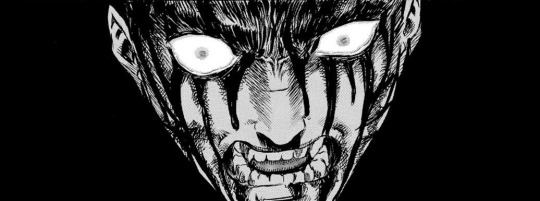
Casca is a woman of color, born in a disadvantaged family and community, that ended up in a mercenary group without achieving the things she wanted, never fully belonging and constantly threatened by groups of men on the enemy side with forms of violence specifically targeted and unnecessary cruel. And everything she goes through culminates or goes back to the Eclipse - before and after - and that should be taken as completely symbolic. Like the multiple instances of rape in Pasolini’s Salò, the innocent, poor and exploitable youth is violated by those in power or those who are in charge. Gambino decides that Guts is expendable or due a lesson in humility, he takes the money and coldly facilitates Guts’ rape. Gennon is rich and powerful and pretends to recreate his fantasy, a sick version of Greek ped*philia. And all he does is using money and power to horrifically exploit the youth and Griffith offers himself up and loses a fundamental part of himself in the process. But the most cruel thing in Berserk is Griffith surrendering to the call of power and doing the same thing to Casca, in the absence of lust or desire: the corruption that has been in him - and has reached Guts as well - has spread. Griffith’s surrender to the call of power, and his intolerance for more of his own pain, silences all empathy in him.
In conclusion, nudity has various narrative functions, beside the suggestion of the erotic: through each character’s naked body, male or female, we see their vulnerability and their fundamental humanity [and if I remember correctly in contrast the rapists are always dressed or covered]. And rape has a symbolic meaning, beside the literal one and the psychological exploration of trauma. Violence but in particular sexual violence is one of the most estreme and powerful tools that can be used in stories [especially in visual media], but unfortunately the overuse of it in an edulcorate format, or as a tease, or devoid of any meaning, has ceased to call for disgust and challenge us to think, has perhaps lessen the impact and the gravity around it. In the 1970s Pasolini saw the dark side of the sexual revolution and how the rich and powerful were willing to build economic empires just to have access to the youth and to the most beautiful women. But he wasn’t the only one. We should reconsider Belladonna of Sadness and the original meaning of those themes in films or later in manga like Berserk and think about it deeply and seriously and not approach every piece of art as entertainment.
Videography:
How America got so Stupid [1]
Miyoshi Umeki: The First East Asian Woman to Win an Acting Oscar [2]
Predatory Romance in Harrison Ford Movies [3]
#berserk meta#casca berserk#manga analysis#this is so long is embarrassing#today we have largely divorced the aesthetic from the political and we look at the last century and don’t fully understand it#editing when I catch a mistake or a misspelled word#eri reads berserk
17 notes
·
View notes
Text
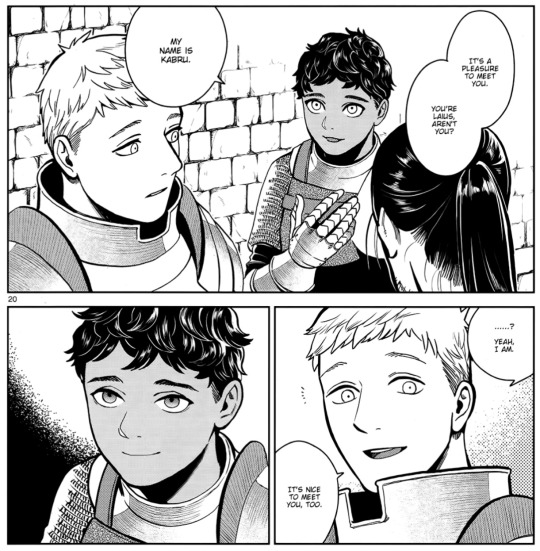
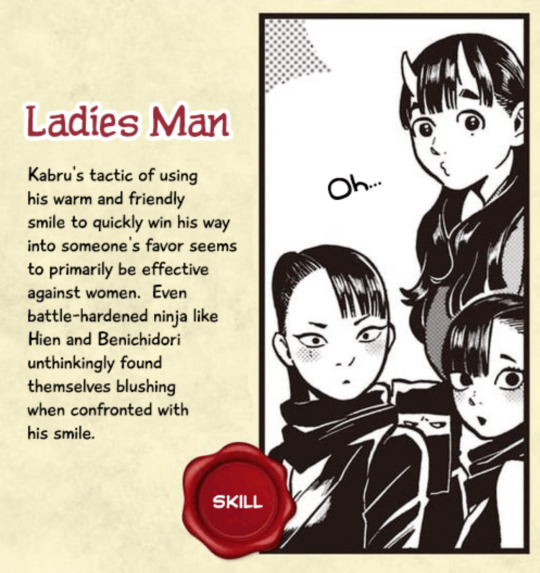
local ladies man’s signature move totally useless against autistic monster enthusiast. more on Kabru’s fumble era at 6
#i’ve seen so many interpretations of that 1 hr freeze frame of Kabru’s smile in ep 16#he’s meeting his long time crush of course he’s trying to charm him#Kabru so obviously has a big fat giant crush on Laios#like atp in the story he’s tried to talk to him and get his attention so many times agjdjajdj#Laios is the human rubix cube he’s been searching for his entire life#everyone else is almost too easy for Kabru to pin down#Laios on the other hand … a treasure trove of autistic mystery#Kabru is so locked in#Kabru used signature move: charming smile#Laios: no effect!#there’s something so beautiful about the popular pretty boy entering his fumble era when his one true love turns out to be autistic#labru#laios touden#kabru of utaya#dungeon meshi#delicious in dungeon#wasabi rambles#seen so many clock that smile as nefarious and machiavellian#baby no Kabru is just dialing the charm up to 100 and what we’re all feeling is second hand embarrassment LMAO
15K notes
·
View notes
Text
spicynoodles as the doctor and river song and YES i know this is a stretch but my target audience is myself and i do not care
#this is so hilariously self indulgent idk if anyone else will appreciate this#my art#lmk#lego monkie kid#lego monkie kid fanart#monkie kid#monkie kid fanart#lmk fanart#doctor who#spicynoodles#lmk spicynoodles#qi xiaotian#long xiaojiao#lmk mk#lmk mei#lmk red son#spicynoodles fanart#bbc doctor who#good lord. this is embarrassing
2K notes
·
View notes
Text
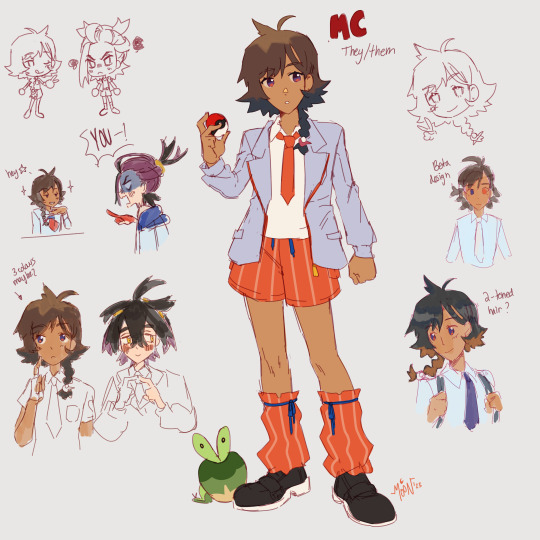
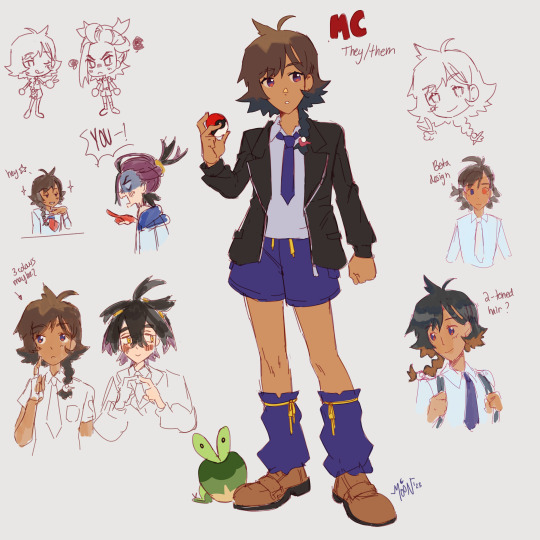

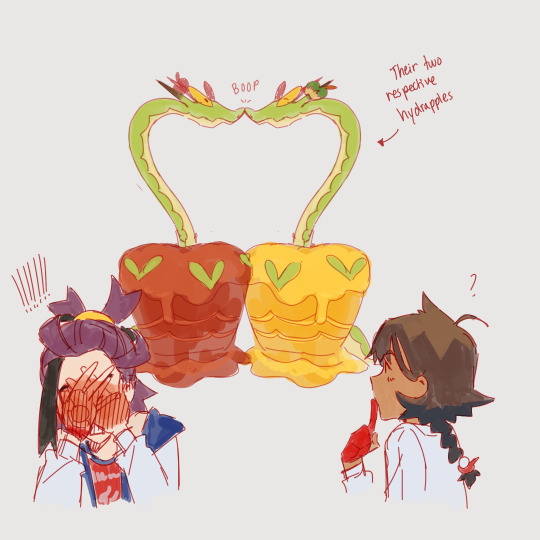
after finishing the indigo disk dlc i decided to redesign my own version of the main character. their name is, in fact, MC, and they like being a little shit to kieran
#hi long time no see#my art#pokemon#pokemon scarvio#pokemon scarlet#pokemon violet#pokemon indigo disk#pokemon indigo disk spoilers#pokemon kieran#moon ocs#i guess???? i guess theyre an oc idk LOL#also yes kieran has an embarrassing crush on them but its the “i liked u but i got envious of you so now i hate u but i still like u” type#i think theyre hilarious
2K notes
·
View notes
Text
not sure why people don't seem to understand that shiv being the victim of misogyny and vitriol from all the men in her life can and does coexist with the fact that she is not a feminist liberal hero fighting to save democracy. why is it that we never afford her any nuance? she's either the only good person on the show and deserves to kill every man in a ten foot radius (twitter) or a uniquely evil cruel sociopath with no heart fueled entirely by spite (reddit). is it not just so much more interesting for her to be a fascism aiding and abetting character like the rest of them who also views herself as more progressive in spite of everything else about her and who undergoes horrific treatment at the hands of the men around her yet has no interest in undoing the system that allows them to do so, only in ruling it herself? shiv is not any better than the others nor is she any worse than them. there's no Evil Olympics here guys, nor should there be. snook said it herself in the after credits sequence -- shiv was just lucky that her interests aligned with her sympathies. who knows what she would've done had mencken been her best personal option? yes she cares infinitely more about politics than roman, yes she is still very much interested in maintaining the capitalist, fascist structure and even strengthening it, so long as it ends with her on top (which either way would be a win for liberal causes bc Woman). fascism isn't one-size-fits-all. it's not just mencken and trump. it's also mattson. it's also logan. it's also roman and shiv and kendall. that's... kind of one of the main points of succession? but even so, that does not negate the fact that as a woman it is so hard to watch some of the scenes with her and tom/roman/kendall -- of course that misogyny will resonate with female viewers, as it should!!! but that resonance needs to coexist with a deeper understanding of her character -- if you want to root for a bad bitch fighting against misogyny go watch, i don't know, captain marvel or whatever. what makes shiv interesting is that she's so so so much more than that -- she is the product, victim, and perpetrator of misogyny and fascism, two concepts so heavily intertwined they're virtually inextricable from each other. tl;dr it's one thing to be like my god someone give shiv a gun and it's another entirely to say, entirely seriously, that shiv is the Good Liberal Feminist One and the rest are all evil. like i absolutely adore shiv but i would honest to god find her so fucking boring if she were actually the person these tweets make her out to be i'm sorry
#me: shiv isn't evil! \ everyone: oh so she's the only good one?#me: shiv isn't good! \ everyone: oh so she's the only evil one?#NUANCE GUYS. IT EXISTS.#honestly i just don't get it. how are you all not just like bored by the versions of these characters you've created#all this being said. every man that called shiv hysterical tonight should be shot and killed.#<3#succession#succession spoilers#casey shut the fuck up about shiv roy#shiv roy#long post#100#500#1000#dude if i thought this would get notes i would’ve proofread it first. LMAO#like this is literally a word vomit ramble that i didn’t even read before posting . embarrassing 4 me#this time on posts i didn’t expect to get notes
4K notes
·
View notes
Text

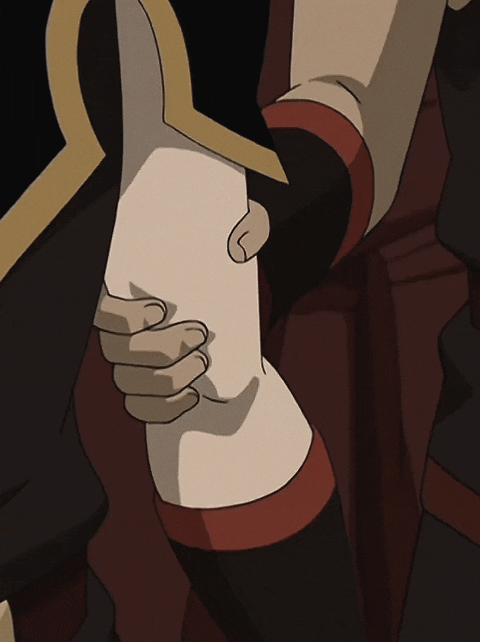

zuko & sokka ; the boiling rock (pt. 1)
#“we can't blow our cover”#the closet is GLASS you blew it a LONG TIME AGO#i like to project this scene onto aus where zuko is defensive bf “i will beat them up for you”#and sokka is like “please stop don't embarrass me”#they're just so silly they are running around living rent free in my mind ‼️‼️‼️#this scene in every edit >>>>>#zukka#zukka gif#the boiling rock#zukka arm grab#< in case anyone is. looking for it ya know#atla gif
505 notes
·
View notes
Text

Thinking about Crowley researching safe foods for ducks....
#good omens#ineffable husbands#aziraphale#crowley#linz originals#my art#ive been lookin at it too long. take it before i hate it.#im not kidding the gomens feelings have hit me like a freight train. im about to be so embarrassing
2K notes
·
View notes
Text
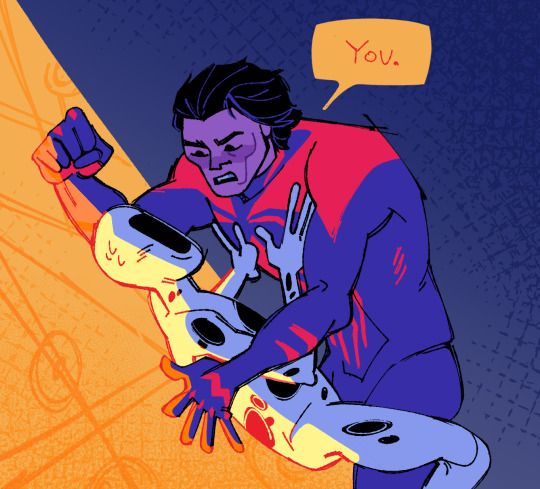
looks like he found the anomaly...
#this is literally so embarrassing but I spent too long on this to not post#spiderverse#spiderman across the spider verse#spiderman 2099#miguel o'hara#the spot#johnathan ohnn#across the spiderverse#atsv#is this a crackship? prolly#my draws#miguel x the spot
1K notes
·
View notes
Text
Modern au Steve not being into video games is out
Modern au Steve who's so good at first person shooters that he annihilates the party every time is in
#steve harrington#momo.txt#he definitely isnt playing the mega long fantasy sci fi rpgs the party is playing#but he enjoys the sports games like the fifa and nba games#and first person shooters like call of duty is where he really shines#he used to play online with tommy all the time and he got REALLY GOOD#like constant first place good#but he never brags about it#so the party always brush it off#until they play a shooter game together and steve destroys all of them to an embarrassing level
445 notes
·
View notes
Text
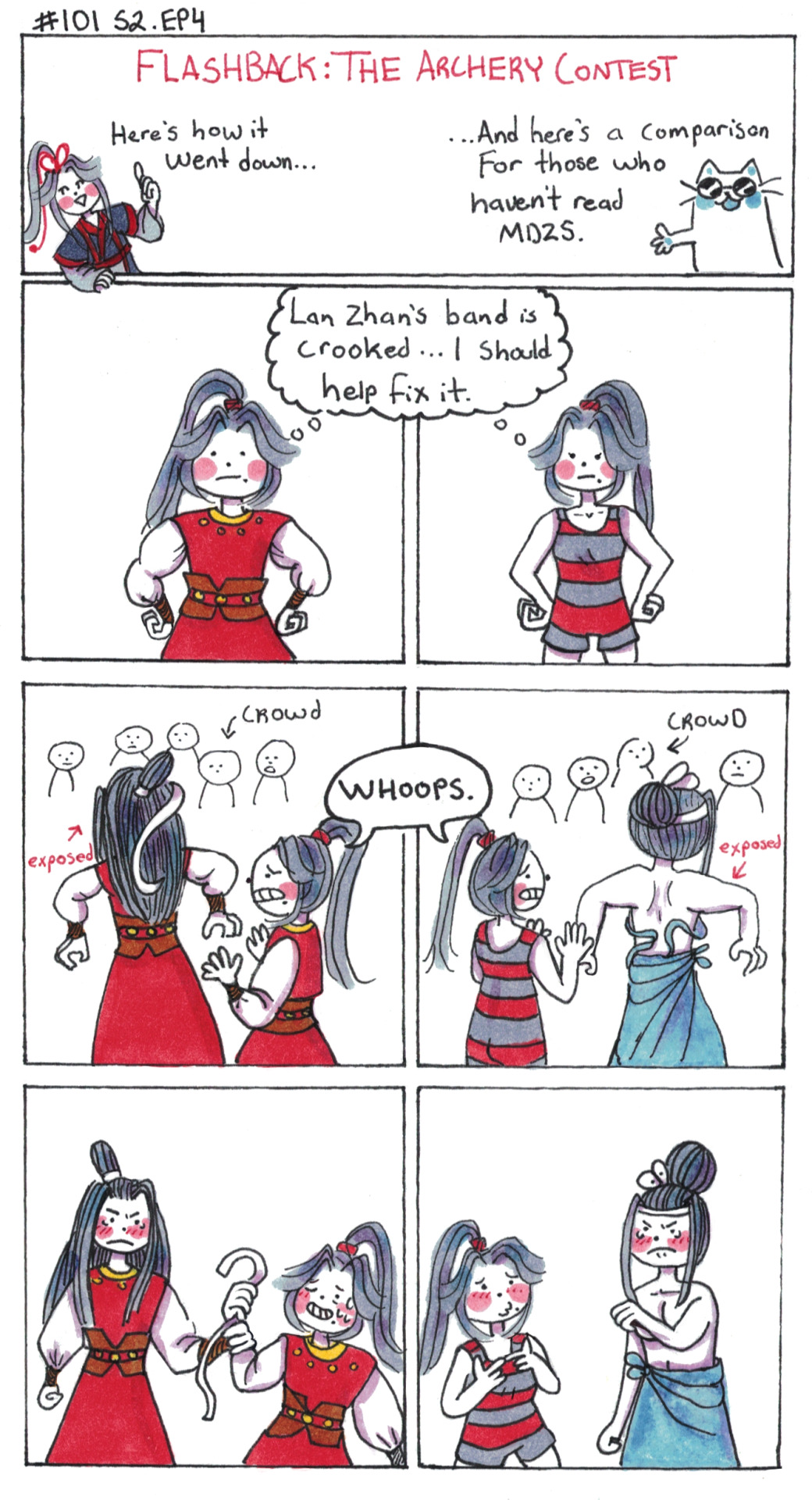
Wardrobe Woes
[First] Prev <–-> Next
#poorly drawn mdzs#mdzs#wei wuxian#lan wangji#Yes: there are people who read these comics who don't know much about mdzs. Several are my beloved and supportive friends B'*)#This comic in particular is one that I've been thinking about for a very long time and I'm so happy to finally be here!#I was trying to think about how to explain the social rules of the forehead ribbon and the reason lwj was so upset#and the metaphor of 'it's kind of like wwx accidently undoing lwj's bikini in front of a crowd.' came to mind.#of course there's a bit more to it than that but the point here is that - accident or not - it still embarrasses lwj#wwx doesn't get the entire context behind it (at the time. Now he *does* and it all makes a bit more sense)#But he knows he made lwj upset. He knows he doesn't want to put lwj in another embarrassing situation.#Not after all this. Not after everything. Not after realizing that his desire for friendship might be the kind of desire that ruins lan zha#Love the symbolism of the archery outfits being red during this moment of 'whoops only married couples can do that' moment.#What if we accidental proposed............accidental marriage....accidental kiss the bridegroom....accidental fall in love.#Guess we did inadvertently get the puffy sleeves and bikini outfits in the end.#wwx in an old timey bathing suit is so important to me. I'll die on this hill.#lwj's cute little box is inspired by @lazycranberrydoodles's cute fan art <3 I love it a lot
890 notes
·
View notes
Text

"sounds nice... having a partner"
#the walking dead game#twdg#violentine#clementine twdg#violet twdg#MAANN when clem says this in s3 JUST WAIT BBY#people who say clemvi has no basis like ep2 isnt just them working as a team for 2 and a half hours regardless of player choice#like be fr#clem telling louis that violet patching up the back wall is ok because she needed something to keep herself busy. married behavior#vi asking clem to help check in on everyone while she deals with the wall. their shared smile when she comes back outside :)#and then they sit in the leadership spot together overlooking the yard and everything theyve planned together coming to fruition :)#sorry i just think their romance set up in eps 1 and 2 is obvious as FUCK and im tired of (Some) people pretending it isnt#'i havent seen her warm up to someone in a long time' brody literally tells clem that vi seems to like her after its been 24 hours#after shes been a block of ice for a whole year. and clem just melted those walls down immediately while they fought walkers together#violet is so devoted to clem post ep1 its embarrassing for her#'i saw she had you pinned and i- shit i got So crazy...' sorry if you dont think shes in love with clem idk what to tell you#'i'll tear that boat apart before we leave without you' i know you would girlie!!!#the animators went CRAAZAYAYAYAY the way they look at each other... their little smiles at each other....even before the belltower#the way clem looks at her while they dance.... the way she puts her head down on her shoulder so contentedly....#and then she keeps her head on violets shoulder as she pulls away so clems chin gets dragged with it like she doesnt want to let go#'so you never forget that night' 'i never will' they are DISGUSTINGLY in love with each other it makes me physically ill#its 2024 and im still hearing 'i just didnt see it :/'. lazerbeams you#spaced art 2024
553 notes
·
View notes
Text

first um tf2 poster. I am definitely gonna be super embarrassed looking back at this BYE.
#tf2#art#fanart#team fortress 2#tf2 demoman#tf2 soldier#boots n bombs#averiart#THIS WAS THE WORST EXPERIENCE I HAVE EVER EXPERIENCED#will do it again#my head hurts#dont look at this for too long#half the editing was on csp#I will die#this is so embarrassing i am going to sleep
315 notes
·
View notes
Text
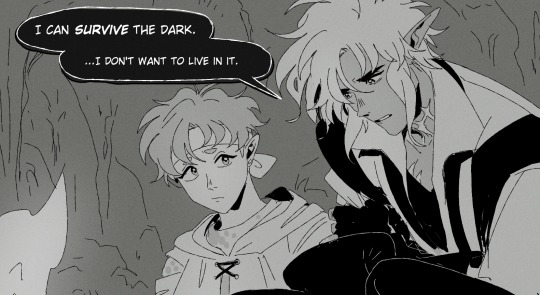
dandelion talks about how when he died it was like he was floating in a sea of black, and the paladin, lafavel, tries to talk him into finding a deity because he's worried about this warlock's soul*
*it doesn't work. dande gets defensively antagonistic
#dungeons and dragons#dnd#ocs#dnd art#dnd character#dnd oc#dandelion treehollow#lafavel adalhard#lafavel says i know you live a long time but you're not going to live forever#dande says well i have plenty of time#then an hour later forgets about the curse in his head that goes off if he wanders off on his own#and it does 30 psychic damage and almost kills him LOL#embarrassing behavior#dande's had some issues with the dark every since he got spirited away to meet his hag mom for the first time in a century and it was DARK#“it feels like that dark is following me...”#honestly very funny that the paladin is so concerned for dande's well being he's like bro you need jesus#he's not wrong#ravelers
449 notes
·
View notes
Text
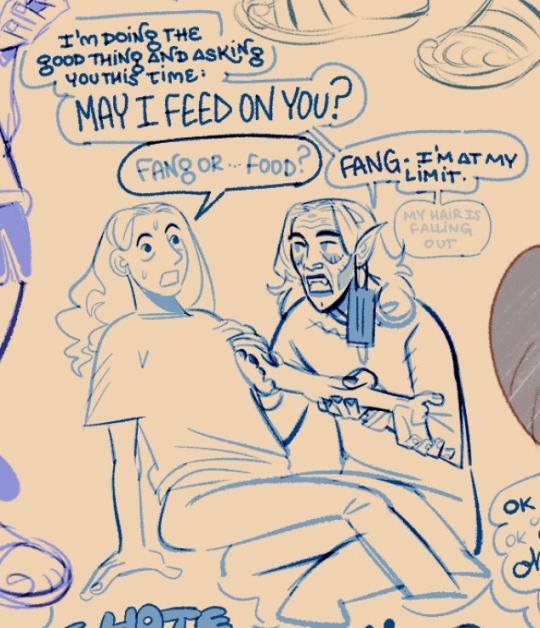


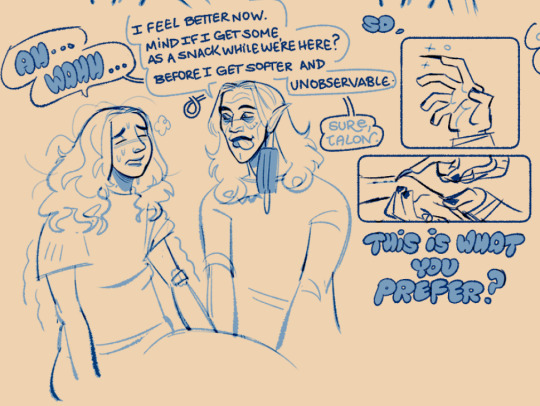
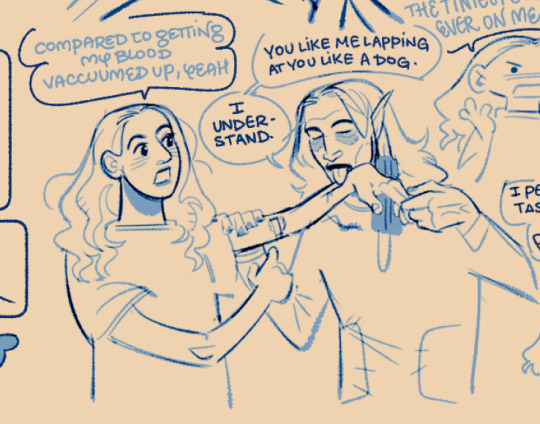

something silly and badly formatted
#a doodley#long post#sorry... i usually just draw freely on canvas then try to fit the drawings into wherever they fit once im done#but i like working with the space i have available and squeezing everything in...doesnt make for the best reading format tho#there's like 5 different art styles here and they all suck. my copium is i wanted to do this quickly#instead of spending so long on each drawing#but whenever i do this i just end up feeling bad about how Bad my little quick doodles are LOL#whatever !#i wanna say i promise i can draw better than this but that might not be true#im embarrassed by how long this post is 😭 i might edit it to all be under a read more. im Shy.#comic
804 notes
·
View notes
Text
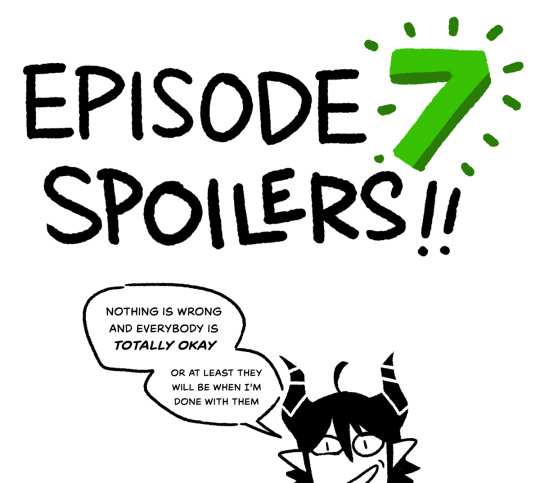






(it probably wasn't actually Idia's fault)
(or was it)
some quick initial reactions to celebrate Diasomnia Day One! it felt like a bit of a short intro, but oh, what a tasting menu of things to come.

#art#long post#twisted wonderland#twisted wonderland spoilers#twisted wonderland episode 7 spoilers#twisted wonderland book 7 spoilers#it's been thirty seconds and already#lilia is sending himself to a farm upstate where he'll have lots of rabbits to chase#malleus does a whole flashback to his most embarrassing childhood memory#ponytail lilia CONFIRMED we have a CONFIRMED SIGHTING everybody#idia does a surprisingly good crowley impression. this is not important to the plot but it's important to me personally.#also silver is probably a cursed prince or something WHO CARES look at these COOL ACORNS#the mental image of silver and lilia having that little heart-to-heart about the ring#while sebek is five feet away sorting laundry#absolutely incredible#meanwhile yuu continues to just have no survival instinct whatsoever#if a horned man approaches you at midnight and goes 'wouldn't it be nice if we never had to say goodbye to anyone ever?' DO NOT SAY YES#also if he starts bragging to you about his sorcerer ancestress DO NOT be like 'yeah but...did she maybe kind of suck'#'was she just super unlikeable personally speaking'#we are so lucky that for some reason malleus is really into all of our weird bullshit#okay shutting up now i promise#i just have so much to say and so few tags to do it in
3K notes
·
View notes
Text

Fishhh
279 notes
·
View notes